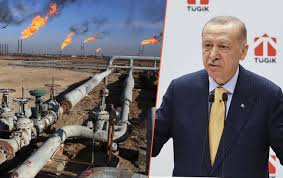Its latest industry forecast reckons oil touching $95 a barrel in real terms by 2040
The annual Opec’s World Oil Outlook (WOO) report has just been issued and gives pointers to the prospects for the energy industry in general and the oil market in particular up to the year 2040 as seen by researchers of the Secretariat.
Since the previous report which was issued in November 2014, oil prices have dropped from almost $80 (Dh294) a barrel to the current lows of $31.15 for the Opec basket of crude oils (ORB) and with persistent volatility expected to continue for some time to come. In his introduction to the report, Secretary-General Abdalla Salem Al Badri said: “The market instability has led to a number of projects being deferred or cancelled altogether, rig counts falling dramatically, costs being squeezed and redundancies being made. And the supply and demand balance in 2015 has been one of oversupply, with stock levels rising to well above the five-year average.”
This almost tells us the mood under which the report was prepared and that 2015 was a challenging year. In this column, the focus is on the oil market in general and succeeding ones will dwell on the other important aspects of energy markets and the downstream industry as well. The WOO ‘emphasises that oil will remain central to the global energy mix over the next 25 years”, with demand continuing to increase in developing countries and as the world’s population reaches a projected 9 billion and with an urbanisation of 63 per cent.
On the economy, the picture in the non-OECD countries is ‘gloomier’ than before, with the Chinese economy more mature and ‘decelerating faster than previously expected’. Yet the global average economic growth rate is forecast to be 3.5 per cent annually up to the year 2040 driven by growth in developing countries, the “demographic and productivity trends” and OECD growth stabilising or slightly increasing. But the situation is expected to worsen with respect to income inequality among regions.
Balanced market
The report assumes that the Opec reference basket (ORB) averages $55 a barrel in 2015 — while in fact it will be just under $50 — and remains optimistic it will resume an upward trend. This is how it arrived at $80 a barrel (nominal) for 2020 or $70.7 a barrel (in real terms) “reflecting a gradual improvement in market conditions as growing demand and slower than previously expected non-Opec supply growth eliminate the existing oversupply and lead to a more balanced market”.
The real price in 2040 is assumed to be $95 a barrel ($160 nominal) to be in line with the cost of the marginal barrel coming out of expensive areas such as nonconventional and deep sea sources. These numbers are sure pleasing to all producers who will hope that Opec’s assumptions are realised. The WOO does not ignore energy policy changes with respect to climate change and emissions reduction that are in place or likely to come, especially with tightening efficiency standards, the increasing shift towards renewable energy and energy subsidies removal.
Given the above, demand is expected to increase from 91.3 million barrels a day (mbd) in 2014 to 97.4 mbd in 2020, which is 0.5 mbd higher than in the previous report, reflecting the decline in oil prices. In 2040, demand is expected at 109.8 mbd, 1.3 mbd higher than last year. Demand in the OECD region is expected to decline by 8 mbd and will be offset with growth from the rest of the world.
Nonconventional oil production
The liquids supply outlook is projected to increase from 92.4 mbd in 2014 to 97.6 mbd in 2020. The increase in the US and Canada is only 2.5 mbd and with the decline in oil prices arresting further gains. While non-Opec liquids supply could reach 61.5 mbd in 2025, it might decline to 59.7 mbd by 2040, a reduction of 2.2 mbd compared with last year’s report. Some increases are expected in nonconventional oil production in Canada and the US and in biofuels and NGLs as oil prices recover, even though non-Opec crude oil supply is set to decline by 3.1 mbd.
In this reference forecast, Opec’s crude oil production increases from 30 mbd in 2014 to 30.7 mbd by 2020 and 40.7 mbd by 2040. Opec’s market share may then rise from 33 to 37 per cent.
In this column, I have often said that the difficult period for Opec would be up to the early 2020s and the WOO is in agreement. However, such an optimistic view for 2040 needs to have further explanations as to what is required to sustain it, how much investment is needed worldwide and in the Opec countries. And what the implications will be for the other energy sources. And what sort of changes are needed downstream as well as on outlook for product demand.
A rich agenda for the columns to come.
Source: Gulf News Published: 12:41 December 27, 2015








Comment here